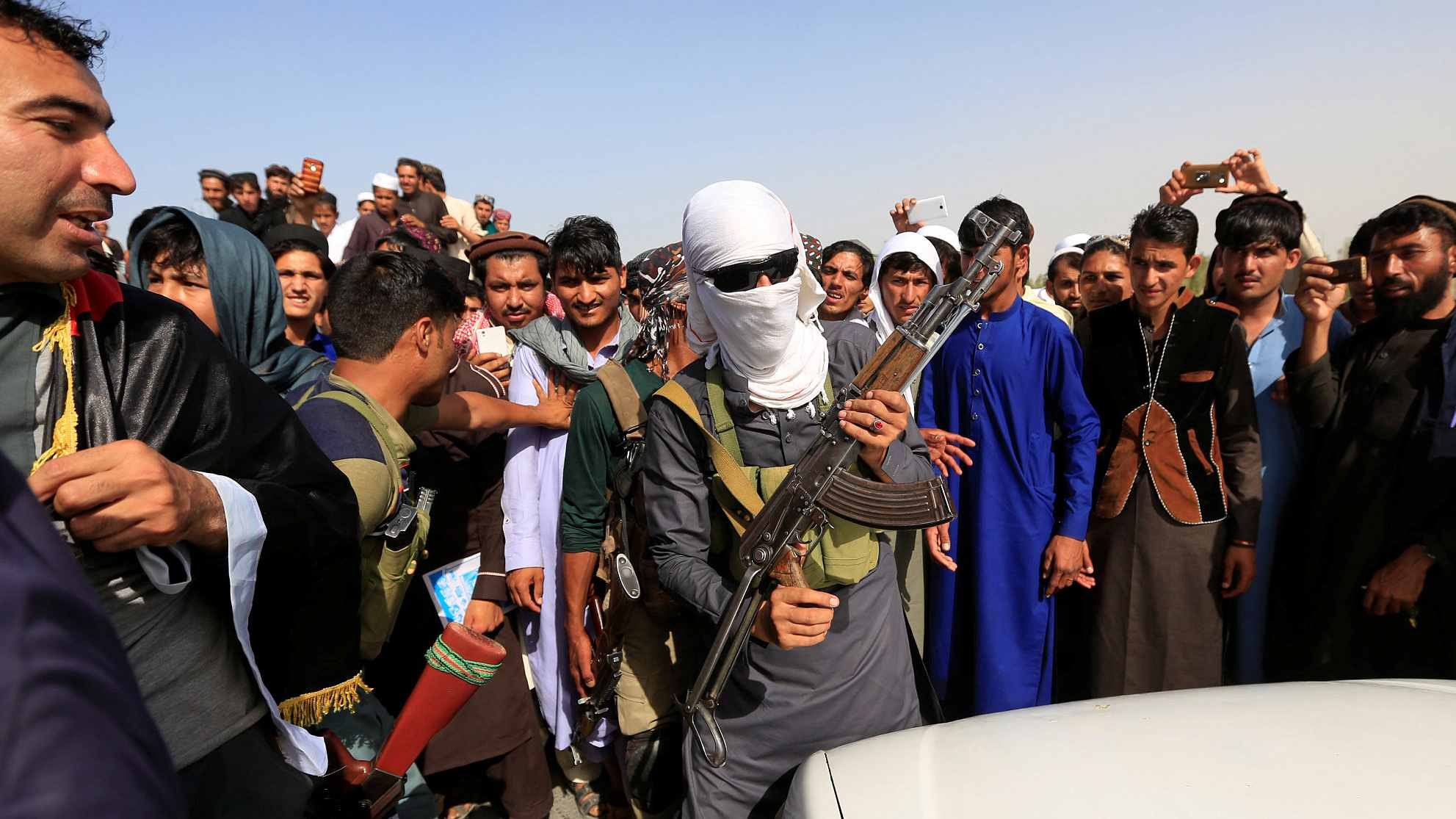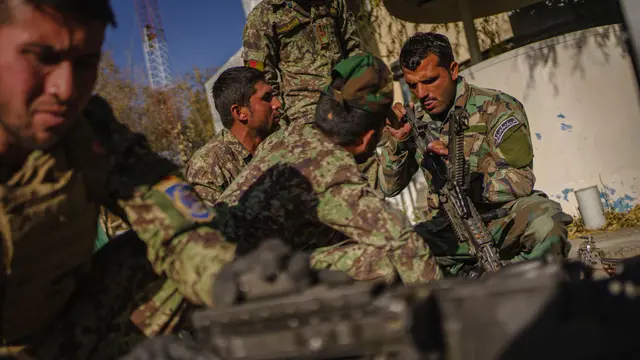
Soldiers clean their weapons at their base on the outskirts of Maidan Shahr, Afghanistan, November 7, 2020. /Getty
Editor's note: Hannan Hussain is a foreign affairs commentator and author. He is a Fulbright recipient at the University of Maryland, the U.S., and a former assistant researcher at Islamabad Policy Research Institute. The article reflects the author's opinions and not necessarily the views of CGTN.
May 1, the Trump-era deadline to withdraw all U.S. troops from Afghanistan, has officially passed. But with it comes the knowledge that Taliban militants were protecting foreign bases under a secret arrangement with Washington all along. The idea that the U.S. can empower terrorists it claims to deter, brings into focus three critical risks for the current coalition retreat: it weakens Washington's case to hold off militancy till September 11, offers new incentives for armed outfits to stage comebacks, and challenges U.S. groundwork for post-withdrawal regional peace under Biden.
On preventing attacks against coalition forces, the U.S. military's tired force posturing is already taking a toll on Afghan security forces – a stated counterterrorism ally. More than 100 active security personnel have been killed in recent waves of violence, and insider attacks against government security forces have shot up by 82 percent. Above all, the security forces' heightened exposure to militant offensives comes at a time when more empowered militant outfits are out to stake their claim, strengthening the Taliban's hand from the sidelines.
In stark contrast, Western forces boast preparation against a similar surge, but haven't brought that perceived advantage to light, despite a clear uptick in violence. U.S. General Scott Miller, the top commander for foreign forces, framed coalition power as the capacity to "respond forcefully to any type of attacks," extending sensitivity to assets that support Afghan security forces. And yet, the same forces are confined to collateral in key parts of Afghanistan.
In talking strategy, Washington also overlooks the amount of territorial leverage it has lost to the Taliban, assuming government security forces will fill that vacuum on their own. Scores of militant checkpoints, including temporary and permanent outposts, now constitute the Taliban's hold on critical north-south supply routes in Afghanistan, expanding that influence steadily as the U.S. banked on Taliban protection for foreign bases.
This is an important variable because though the Biden administration has sought to sidestep the Trump-era deal and stretch withdrawal till September, Washington is still courting Taliban approval for its extended withdrawal schedule, hoping associated blocks on violence could put coalition security first. If the expectation is that Afghan security forces will be subject to any such reduction in violence too, latest assessments from the Special Inspector General for Afghanistan Reconstruction (SIGAR) – a top Pentagon watchdog – remove all doubt: "the complete withdrawal ... from Afghanistan will test whether the Afghan National Defense and Security Forces (ANDSF) can sustain themselves and defend the Afghan government." No mention of swaths of Afghan territories that emerged unguarded once U.S. withdrawal priorities skewed inward.

A Taliban member (C) celebrates ceasefire with people in Rodat district of Nangarhar province, Afghanistan, June 16, 2018. /VCG
New signs also suggest militant groups such as Al-Qaeda and ISIL have sensed this discord. Both pitch their opposition to the U.S. as primary, but endorse in practice an intricate web of militant offensives during the current drawdown. "War against the U.S. will be continuing on all other fronts unless they are expelled from the rest of the Islamic world," said a pair of Al-Qaeda operatives in a CNN exclusive.
ISIL, which received pushback from the Taliban upon U.S. requests, channels its energy toward more isolated bombings – some claimed by its local affiliate, while others sustained in ambiguity with Afghan government officials and journalists on the radar.
So what does all this say about U.S. groundwork for post-withdrawal regional peace?
Minimum substance.
First, militant outfits with competing motivations for violence are likely to construe one group's leverage in post-withdrawal Afghanistan as a threat to another's standing. Fluid recruitments and porous borders are hence set to raise the specter of cross-border militancy, pointing to the tactical failures of outgoing U.S. forces: the Afghan military is both demonstrably short of targeted surveillance practice and air power alternatives, despite U.S. platitudes on cooperation.
Second, Washington is faced with a litmus test on credible regional diplomacy. It must back political settlement in Afghanistan with the same commitment and consistency as the Extended "Troika" on Peaceful Settlement in Afghanistan – a grouping of Pakistan, China and Russia. The 14-point joint consensus reached this week between them is a welcome sign that the U.S. is at least factoring cross-border militancy dynamics to interpret security as a shared imperative.
But it is ultimately on the U.S. to confirm that its trajectory for peace during the withdrawal is in sync with vulnerable government forces on ground. Contradictions such as ceding strategic ground to the Taliban, marketing military might, and overlooking Afghan military stakes in an intelligence toehold, are barely proof of synchrony.
(If you want to contribute and have specific expertise, please contact us at
.)
 简体中文
简体中文

